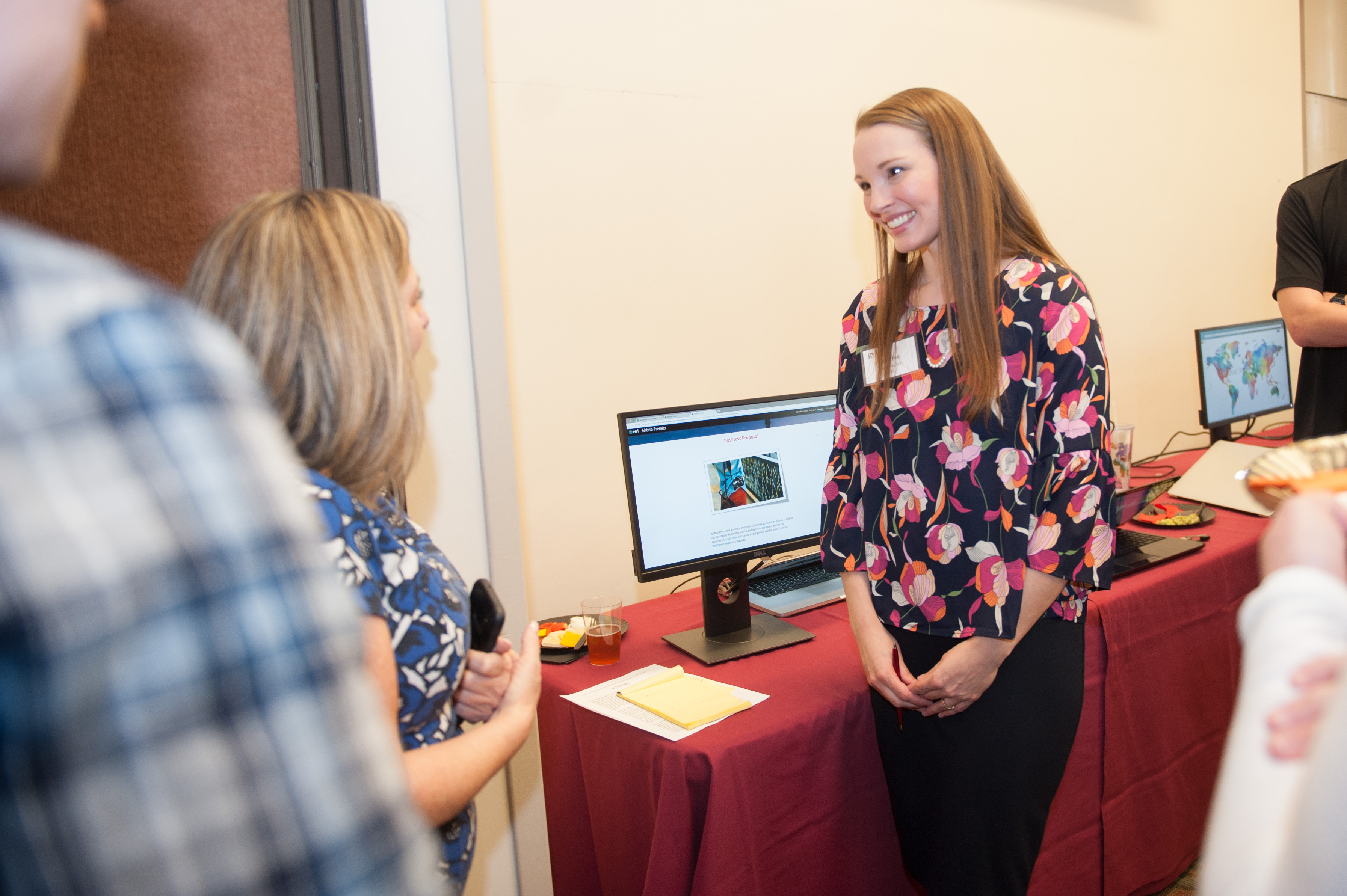Obtaining an MBA was always one of Karisa Schroeder ‘18’s goals. Schroeder received her Bachelor of Science in business administration from the University of Wisconsin-Stout in 2012, and, after spending a few years working in marketing for national retail and media accounts, nonprofits, and industrial solutions, knew it was time to pursue a degree.
How Schroeder chose her MBA program
“Choosing the University of Redlands’ MBA was easy, as I found the class schedule and availability of seven campus locations to be friendly to working professionals. I was able to receive graduate credit for undergraduate work in statistics, economics, and accounting, which cut my required class work down by 25 percent,” explains Schroeder.
She also loved that the program offered four concentration areas:
- location analytics,
- global business,
- finance,
- and marketing.
“Naturally, I was drawn to marketing by my experience in sales, marketing, and communications. Then—two classes into the general MBA coursework—I discovered GIS (location analytics).”
What is GIS?
GIS stands for “graphic information systems”. ESRI, the leading GIS company and a University of Redlands’ partner, explains that “a geographic information system (GIS) is a framework for gathering, managing, and analyzing data. Rooted in the science of geography, GIS integrates many types of data. It analyzes spatial location and organizes layers of information into visualizations using maps and 3D scenes.”
The geographic information systems (GIS) and location analytics industry is expected to double by 2023, becoming a $10 billion industry (BusinessWire.com). GIS and location analytics help business leaders gain deeper insights into data--ultimately, allowing them to make smarter decisions.
The Redlands’ MBA concentration in location analytics equips students to get ahead of this trend.
GIS, location analytics, and marketing
“While performing demographic research with the United States census, I was introduced to the power of mapping data for visual storytelling. In previous jobs, when searching for project solutions, developing communication assets, or brainstorming new products, we asked the questions ‘who, what, why.’ But it was not until I discovered GIS through the University of Redlands School of Business that I started asking ‘where,’” explains Schroeder.
So, she started doing research. Shroeder found GIS to be directly applicable to all areas of the organizational value chain; by asking “where,” the answers for “who, what, why” followed suit. GIS and location analytics blended perfectly with her background in marketing, and within one week of this discovery, Shroeder decided to change her MBA concentration to Location Analytics (GIS).
What was it like to be in a GIS MBA program?
At first, Shroeder found the program intimidating, especially as she needed to learn new software. However, she soon found the business school offered tremendous support in partnership with the Redlands-based industry leader in mapping software, Esri.
“I took part in preliminary workshops on campus that taught best practices, and I sought out additional tutorials online to supplement my classroom learning.”
As Shroeder continued to enhance her GIS skills, she was also polishing MBA-level strategic thinking in her other coursework. Both the MBA and GIS courses required scientific processes, while providing an exceptional framework for exploration and creativity. In addition to working with data and maps, the program connected Shroeder with the forefront of 21st century business knowledge.
Topics included:
- big data management,
- location analytics,
- IoT,
- blockchain integration,
- tapestry segmentation,
- value chain,
- machine learning,
- social media and web applications,
- logistics,
- business ethics,
- and security.
GIS and location analytics professional development opportunities beyond the classroom
To complement classroom learning, the University offered extensive opportunities for students interested in GIS. A spatial studies group meets weekly throughout the academic year to help students to stay informed on leading topics, experiment with new software, and network for career growth. Students also have opportunities to share work on large-scale platforms, both on- and off-line. Schroeder had the pleasure of presenting her research at the Los Angeles Geospatial Summit and enjoyed networking locally with a StoryMap presentation at the University of Redlands' Spatial Learning, Research, and Community Service Symposium.
Financial support for Redland’s MBA students
Scholarships and awards are also available for students within the program. Shroeder was awarded the 2018 GIS Excellence in Business Award and received a scholarship contribution on behalf of MBA-GIS alumnus Kazuo Takeda and the Disney “Ears to You” Program. For academic excellence, She was recognized with Delta Mu Delta International Business Honor Society membership and will soon serve on the board as a first-year graduate recipient.
Hands-on GIS and location analytics experiences
According to Shroeder “By far the most rewarding experiences in the University of Redlands MBA — Location Analytics program have been the hands-on career growth opportunities, where students are paired with high-performing organizations for on-the-job training and mentorship.”
Through these opportunities, Schroeder managed project teams to create marketing campaigns for local startups, developed a location strategy business plan for an international nonprofit, and completed an MBA capstone by performing as an on-site consultant for a leading Southern California business.
'Shroeder sums it up: “I am positive the University of Redlands School of Business MBA program has added tremendous value to my career. I look forward to the opportunities that are ahead, and I am grateful to everyone who has encouraged and supported me in my journey.”
Learn more about the University of Redlands School of Business, a leader in spatial business education.








